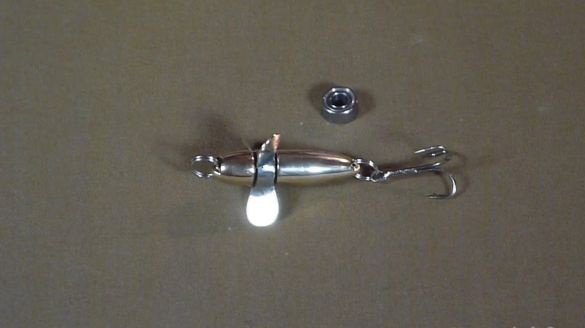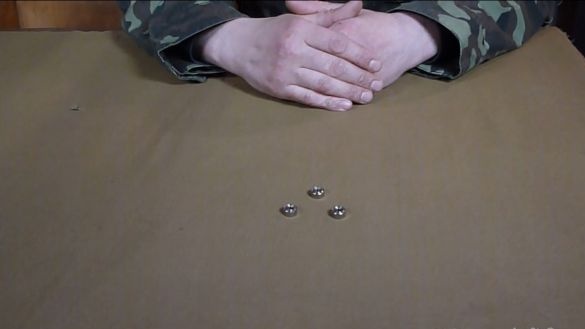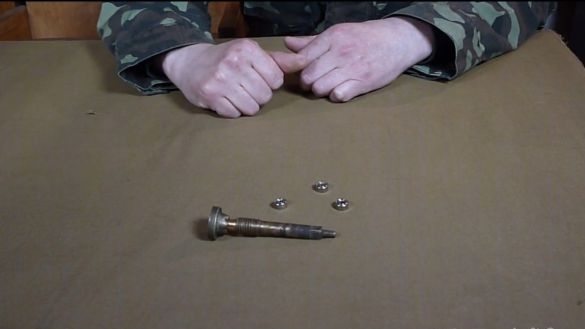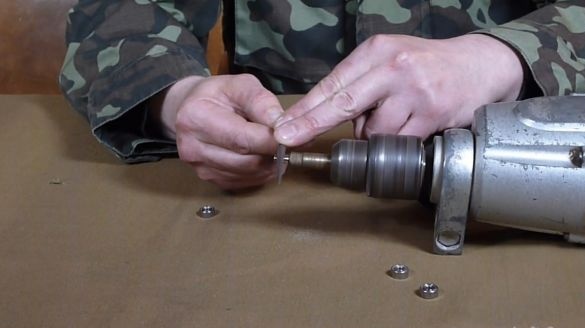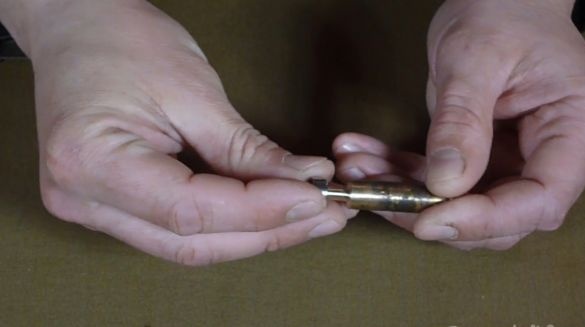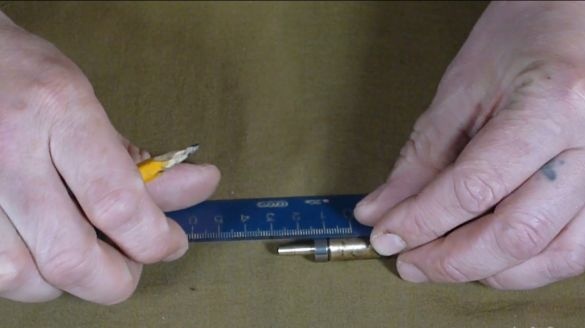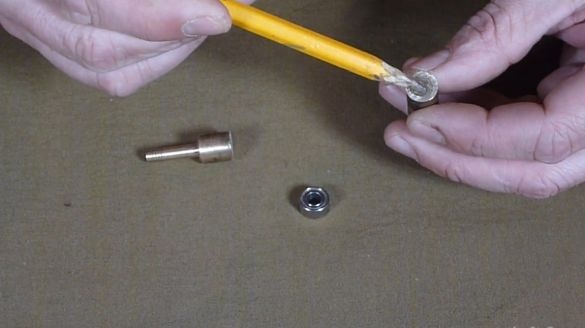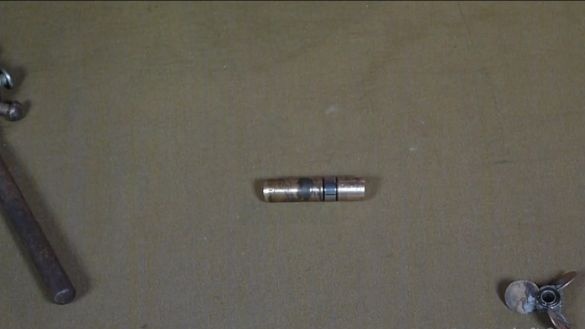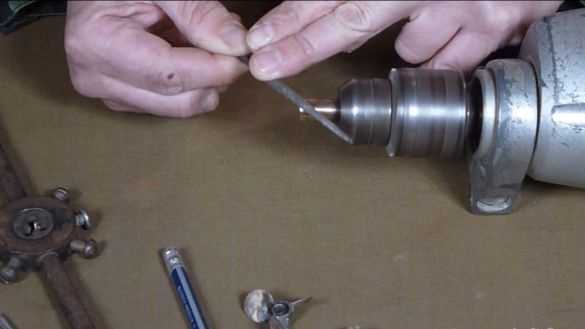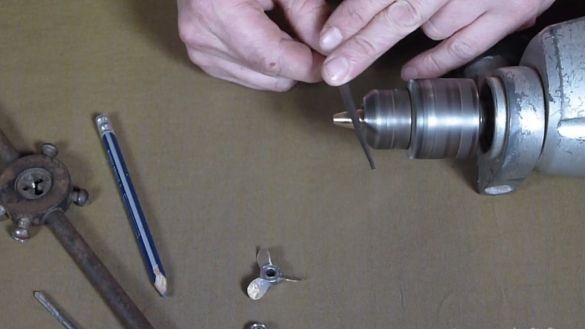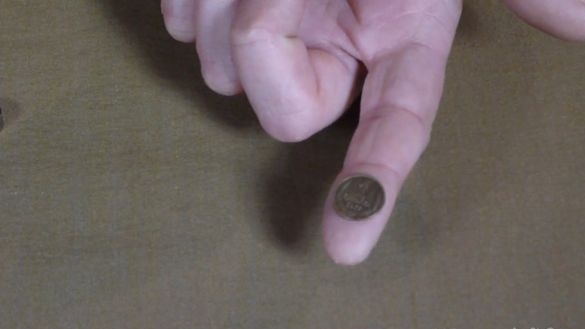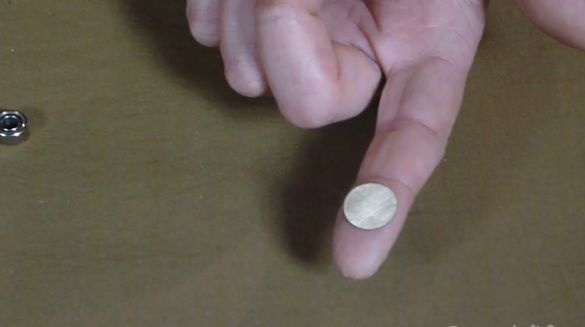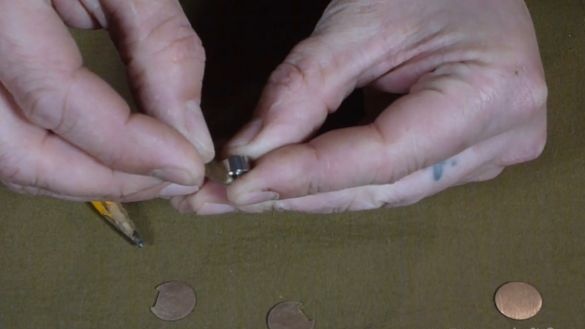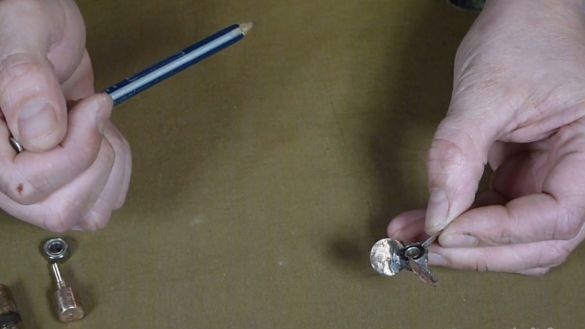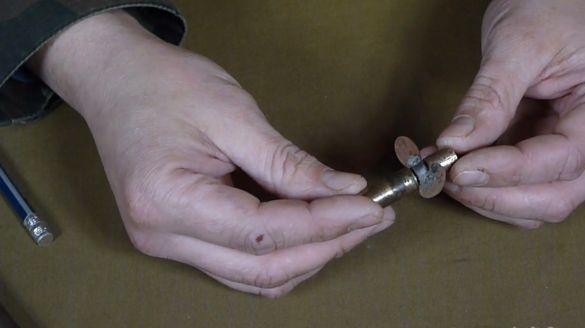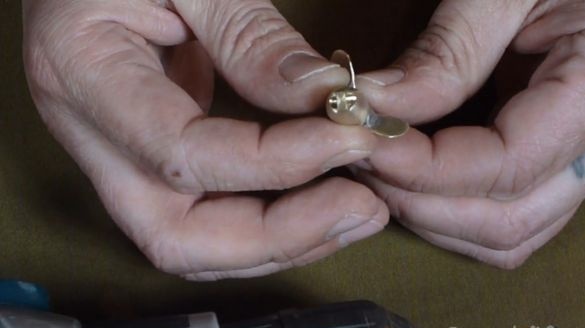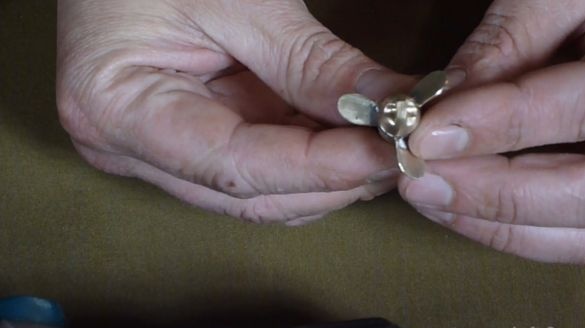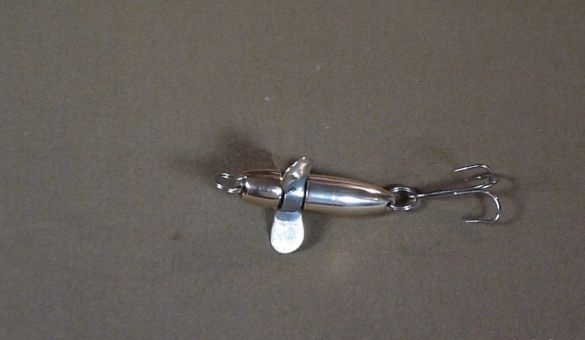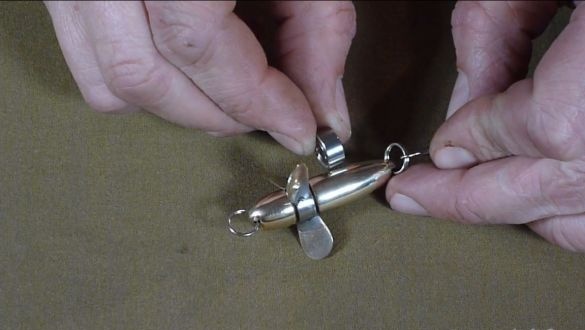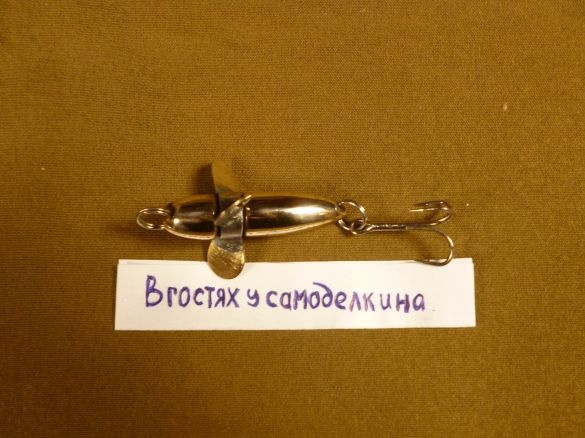Let's make a little forgotten by the fishermen, but nevertheless a catchy bauble - Devon. For work, we will use junk materials that we will find in our workshop.
Tools needed and fixtures.
1. Electric drill.
2. Drills.
3. A set of files.
4. Tap.
5. Lerka.
6. Sandpaper.
7. Pasta GOI.
8. Soldering iron.
9. Tin.
10. Soldering acid.
Donors involved in the manufacture.
1. Bearing from a broken fishing reel.
2. Soviet coins worth one kopek.
3. Brass stem from inch fan.
To begin with, we disassemble the coil that cannot be repaired and remove the bearings from it.
We measure the outer diameter of the bearing and select a suitable brass bar. In our case, the stem from an inch water supply fan fit perfectly.
We cut off the unnecessary thread at the rod, and having clamped the workpiece in the drill, we grind the bearing seat using the file.
You need to do this slowly, constantly checking the resulting size. The end face of the workpiece needs to be done a little on the cone so that it abuts against the inner race of the bearing.
Cut off from the resulting workpiece 1 cm.
We drill a hole corresponding to the seat. Drilling a flat hole is easier. if there are two drills. We clamp the workpiece into one, drill into the other and drill towards it. We also cut the threads on the stem and in the hole. It is very important to maintain the alignment of the brass parts and the bearing.
Using a drill and a file, we give the workpieces the desired shape, after which we sand and polish the GOI paste.
We proceed to the most responsible design node. The blades must be soldered to the bearing. Blades can be cut out of sheet brass, and if it is not, then Soviet coins can be used.
We grind coinage at coins, put three pieces together and make a small cut.
This cut will allow you to withstand the same inclination of the blades.
We solder the blades to the bearing, strictly maintaining the distance between the blades and the angle of inclination.
Naturally, we sand and polish everything.
We drill holes for the clockwork rings. To do this, we cut small shelves on both sides of the Devon.
Putting all the parts together, we catch the clockwork rings and tee.Devon is ready to please you with a catch.
If desired, it is possible to equip the Devon with a second bearing, with the blades rotating in the opposite direction, this will reduce the twisting of the fishing line or cord.
To check the build quality of the Devon, it is necessary to blow on the blades, they must rotate freely.
All fishermen have neither tail nor scales !!!
You can watch the video about making Devon here.


